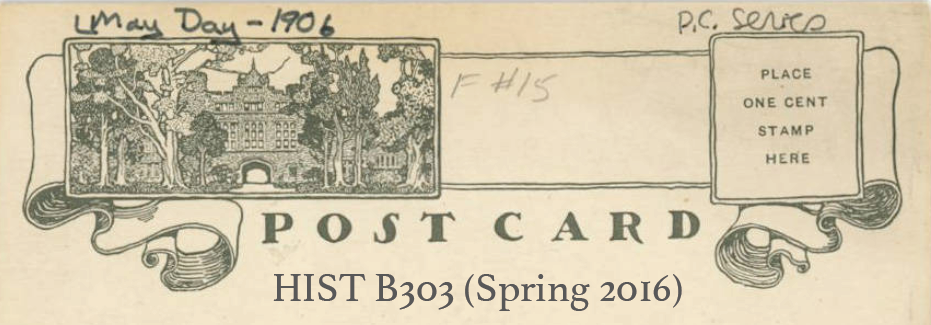I was incredibly struck by Dolores Hayden’s descriptions of revolutionary changes in attitudes to public art, and the way it reflects the potential of future public history projects (including the History Truck). Hayden describes how previously public art has been defined as “art that is accessible to the public” but that now it is being recategorized as “art that has public content” (Hayden, 67-68). I appreciated Hayden describing these two sometimes conflicting meanings of the word public, especially because its a word we use so often in this class but haven’t had the chance to really challenge yet. Even though Hayden is specifically describing art, her point is much broader about combining accessibility with representation. Public art and history aren’t just for the public, they’re about the public.
I’ve been thinking about public art a lot lately because of a discussion that I’ve seen online about the incredibly racist paintings in the Minnesota state capitol back home (http://www.citypages.com/arts/battle-rages-over-racist-paintings-in-the-minnesota-state-capitol-8070152, for those of you who want to know more. there’s also an online petition that has very few signatures but was written by a great organization that should get a lot more love). Until reading Hayden, I never really broke down the idea of public art in general, and her terminology and definitions are helpful for me in thinking about the various ways that the current public art in the capitol is not serving the people it’s meant to be for. Right now the art in the MN state capitol is accessible to the public, but the white supremacist content means that art isn’t really public.
The Philadelphia Public History Truck is attempting to be both accessible to the public and with public content. More than that, it is also trying to be publicly created and curated, going a step beyond even Hayden’s definition to be by the public, not just for and about them. This seems very ambitious, but it’s also a exciting way to move forward. Can we take this attitude into discussions of things like the art in the MN state capitol? When replacing the current paintings, can the new works go even further and be not just accessible to the public, about the public, but also by the public?

Sophie, yes! What is public? How does ‘public’ change depending on the preposition (by the public, for the public, about the public)? oh goodness, so much to discuss.